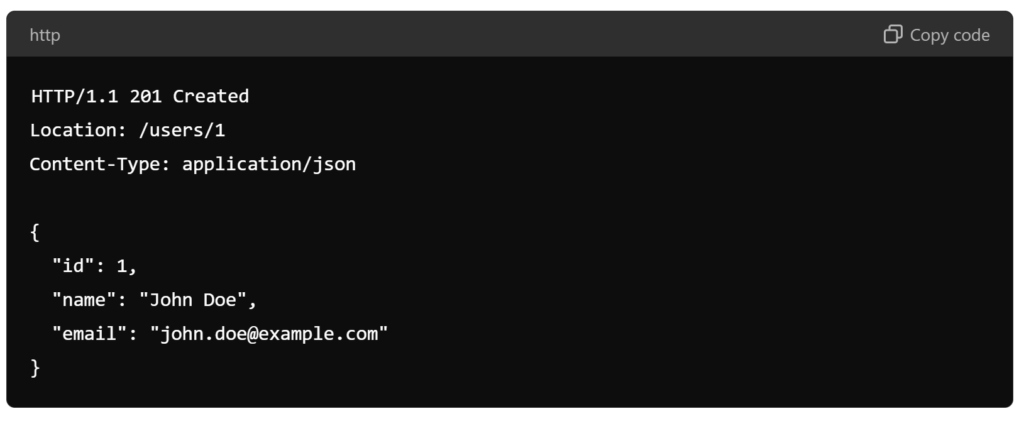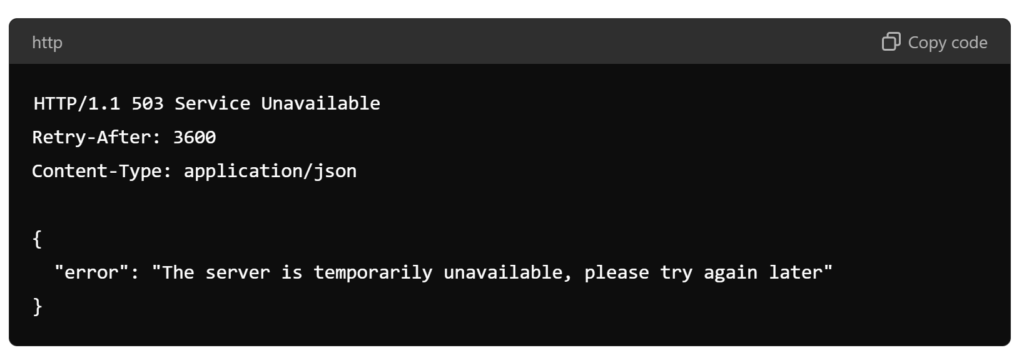HTTP status codes are essential elements of web communication, providing crucial information about the status of a client’s request to the server. These codes are grouped into five classes, each indicating a specific type of response. Let’s dive into each class and explore some common status codes, complete with examples and explanations.
1. Successful Responses (2xx) ✅
200 OK
This status code indicates that the request has succeeded. The information returned with the response is dependent on the method used in the request (GET, HEAD, PUT, POST).
Example
A GET request to retrieve a user’s profile data might return:

201 Created
This status code is returned when a resource has been successfully created, typically in response to a POST request.
Example
A POST request to create a new user account might return:

204 No Content
This status code indicates that the server has successfully processed the request, but there is no content to return.
Example
A DELETE request to remove a user’s profile might return:

2. Redirection Messages (3xx) 🔄
301 Moved Permanently
This status code indicates that the requested resource has been moved to a new permanent URI. The new URI should be provided in the response.
Example
A request for an old URL that has been permanently moved might return:

302 Found
This status code indicates that the requested resource is temporarily located at a different URI. The client should use the URI provided in the response for future requests.
Example
A request for a temporarily moved resource might return:

3. Client Error Responses (4xx) ❌
400 Bad Request
This status code indicates that the server cannot process the request due to a client error (e.g., malformed request syntax).
Example
A request with invalid JSON data might return:

401 Unauthorized
This status code indicates that the request requires user authentication. The client must provide the necessary credentials.
Example
A request for a protected resource without authentication might return:

403 Forbidden
This status code indicates that the server understands the request but refuses to authorize it.
Example
A request for a resource the user does not have permission to access might return:

404 Not Found
This status code indicates that the server cannot find the requested resource.
Example
A request for a non-existent page might return:

4. Server Error Responses (5xx) 🚫
500 Internal Server Error
This status code indicates that the server encountered an unexpected condition that prevented it from fulfilling the request.
Example
A request that triggers a server-side exception might return:

501 Not Implemented
This status code indicates that the server does not support the functionality required to fulfill the request.
Example
A request using an unsupported HTTP method might return:

502 Bad Gateway
This status code indicates that the server, while acting as a gateway or proxy, received an invalid response from an inbound server.
Example
A request routed through a proxy server that receives an invalid response might return:

503 Service Unavailable
This status code indicates that the server is currently unable to handle the request due to temporary overload or maintenance.
Example
A request during server maintenance might return:

504 Gateway Timeout
This status code indicates that the server, while acting as a gateway or proxy, did not receive a timely response from an upstream server.
Example
A request routed through a proxy server that times out might return:

Conclusion: Understanding HTTP Status Codes
Understanding HTTP status codes is vital for troubleshooting and optimizing web applications. These codes provide essential information about the success or failure of a client’s request and help developers diagnose issues quickly. Whether you’re developing a new API, maintaining an existing web application, or simply learning more about web technologies, a solid grasp of HTTP status codes is invaluable.


















